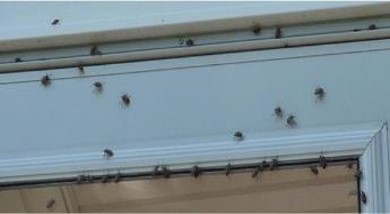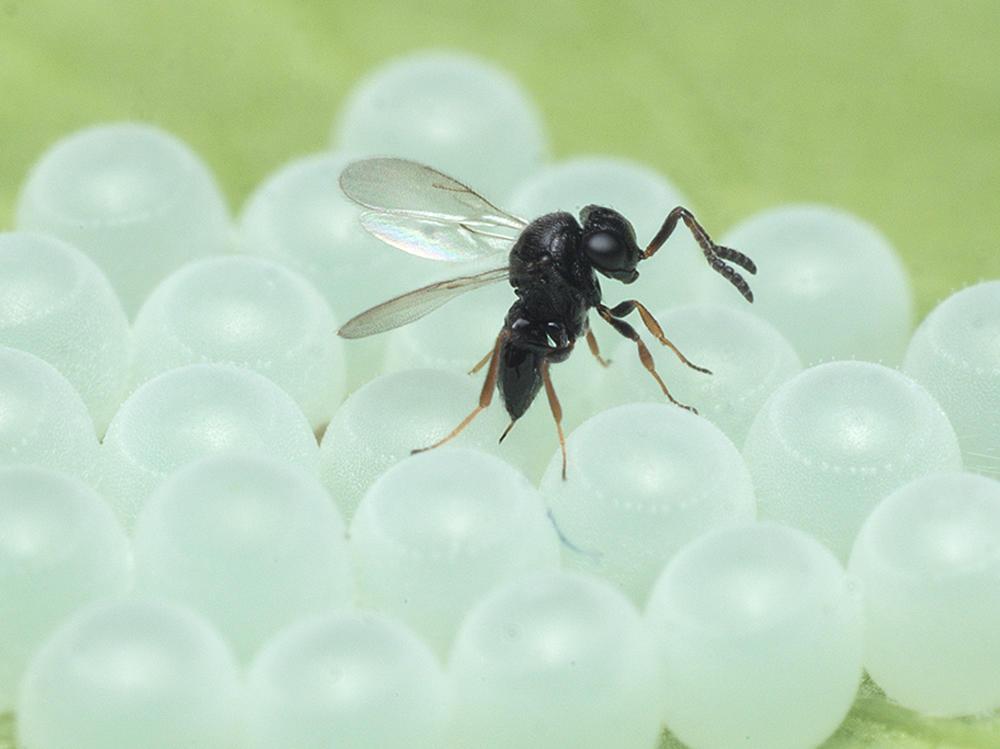Managing brown marmorated stink bugs in homes
How to prevent and get rid of brown marmorated stink bugs in your home or building.

The brown marmorated stink bug, Halyomorpha halys (Hempitera: Pentatomidae), is an invasive insect native to eastern Asia (Photo 1). It was first discovered in Michigan in 2011. Since then, they have spread and established throughout the state. In addition to damaging plants and fruit, brown marmorated stink bugs can be a nuisance because adult stink bugs often seek shelter in large numbers inside buildings in the fall.
Brown marmorated stink bugs (BMSB) will not cause structural damage or reproduce in homes. They do not bite people or pets. Although they are not known to transmit disease or cause physical harm, the insect produces a pungent and unpleasant scent. When handling the bug, the odor is transferred readily. It is best to avoid squishing them since high numbers of stink bugs can stain furniture through secretions. Any secretions on skin can be washed off. BMSB already inside a home can be swept, vacuumed or attracted, trapped and killed with a light trap.
Keeping stink bugs out of a home
The best long-term method of controlling these bugs in homes is to prevent their entry. In homes with wooden siding, their entry can be reduced by caulking or sealing cracks and crevices on the exterior. On homes with vinyl siding, caulk will not provide complete efficacy at preventing beetles. This is due to the way vinyl is constructed and loosely nailed to permit the vinyl panels to expand and contract with changing temperatures. If sealing the exterior walls does not help, then caulking and sealing around outlet and switch boxes, ceiling fixtures, heat ducts and other openings in interior walls may at least keep the bug in the walls and out of the living space.
If you notice clusters of stink bugs on the outside of your home or barn in September and October (Photo 2), you may find them indoors later in the season. The insects can be sprayed off the home with a strong jet of water and killed or thrown into a bucket of soapy water. While there are insecticides labeled for application to the outside or perimeter of homes, these will only kill stink bugs by contact. Since stink bugs can fly several miles, a single application is unlikely to have long-term benefit unless thousands are on the exterior of the home.

In the last few years, a beneficial insect called the samurai wasp (Photo 3) has been released by Michigan State University entomologists to help control BMSB. Samurai wasps are parasitic wasps that lay their eggs within the eggs of stink bugs. At only 1 – 2 millimeters as a full grown adult, the samurai wasp is unlikely to be noticed unless you find a stink bug egg mass with a tiny wasp guarding it or with its eggs blackened instead of a normal green color. The samurai wasp occurs naturally in parts of the state and is not available commercially. Other states have released this wasp to help reduce brown marmorated populations, and there is evidence that areas with samurai wasps have a greater number of parasitized BMSB egg masses. The establishment of the samurai wasp will also assist residents who find their homes or structures temporarily invaded by an unwanted stink bug.




 Print
Print Email
Email